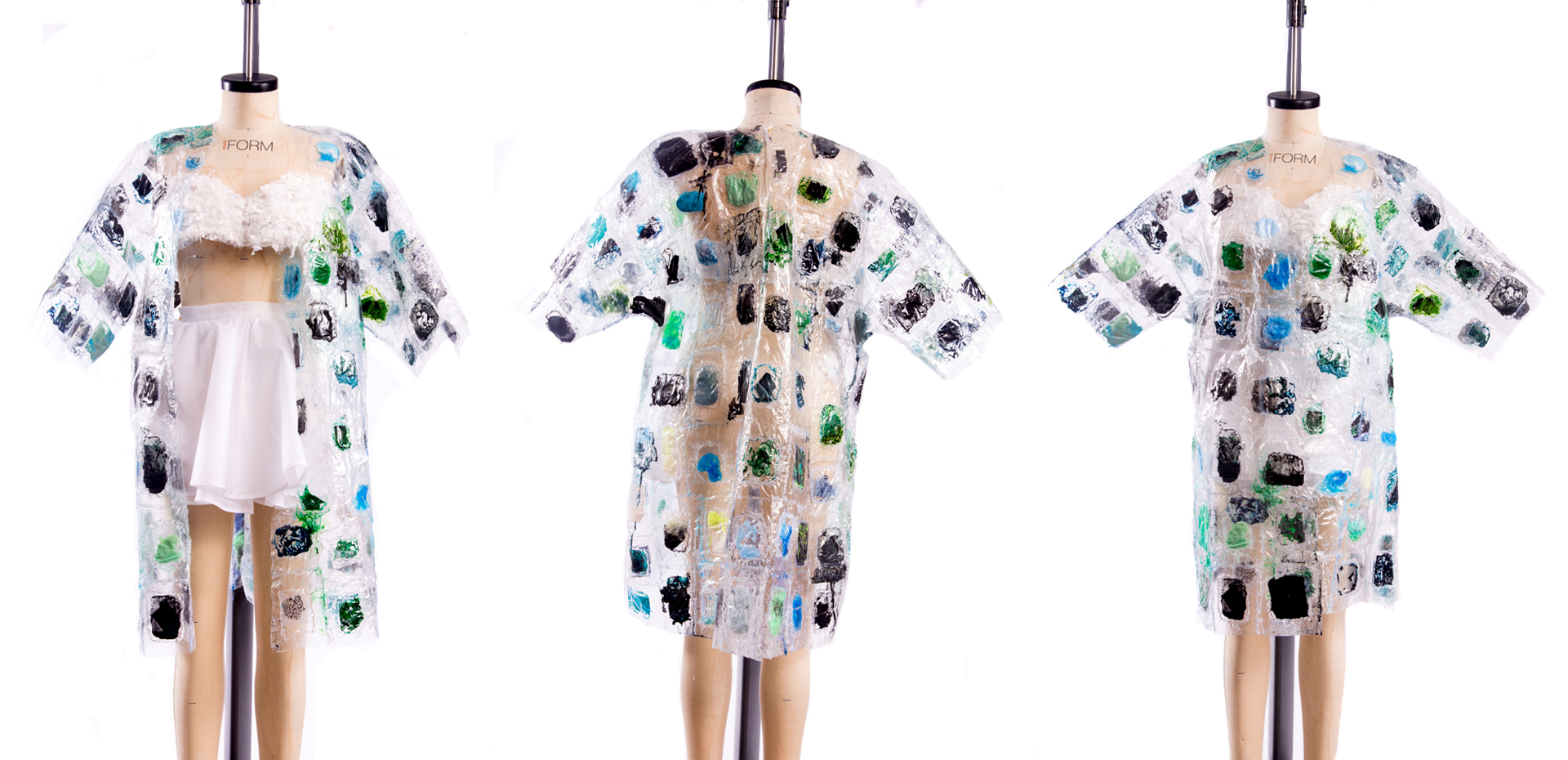The global fashion industry is one of the most resource-intensive in the world. On Wednesday, April 25, apparel design students will re-imagine the industry and shine a light on its environmental impact at the Weisman Art Museum’s (WAM) (RE)generation showcase.

By considering all stages of production—from the material, construction, consumer use, and eventual disposal—student designers created garments out of recycled and reused materials. Inspired by WAM’s exhibition “Vanishing Ice,” which visualizes the environmental and social impacts climate change has had on the Earth’s polar regions, the event’s goal is to encourage industry changes to create a healthier planet.
Ian Harris will be showcasing three pieces in the show: a jacket, a top, and a skirt. “My jacket is a patchwork of pouches featuring kimono-style sleeves, made out of clear plastic recycled from old garment bags. Each patchwork piece is actually a little pouch containing a liquid mixture meant to represent toxic water pollution,” he explained. “Underneath the jacket, I have a bandeau top that features a textile I created using plastic bags in a fringe style. Below that is a short circle skirt created out of a recycled nylon banner. I’m going for full-on resort wear fantasy, but if the resort was on the banks of a polluted river.”
Harris was most inspired by the “Vanishing Ice” photo Wilhelmina Bay, Antarctica, 2005. The photo, taken by Anne Noble, centers on empty white plastic chairs, which sit on a cruise ship in Antarctica. “There are no people in the photo, just the objects on the ship set against the immense background of glaciers and water…it makes me think of the people who are rich enough to spend the money to go see such natural beauty, even while their visit might have an adverse effect on the beauty itself,” said Harris.
In addition to creating a piece for the show, students researched the fashion industry’s impact on climate change and explored the 2018 Measuring Fashion Environmental Impact Report produced by Quantis and the ClimateWorks Foundation. For Harris, one of the biggest takeaways from this research was the positive impact major brands and companies could have if they introduced more sustainability policies during the manufacturing process. “A sustainability policy could also include promotion and education about the impact that the fashion industry has on climate change. Consumers shouldn’t have to do in-depth research to know more about the harmful aspects of pollution created by the textile industry,” he reasoned.
As the night of the show approaches Harris hopes that attendees will not only learn that fashion is an important form of art, but will also see just how closely climate change and the fashion industry are tied. “I want this event to start conversations about the attendees’ own privilege regarding their impact on climate change.”
What started as a class project for Ian Harris, Warda Moosa, and Mary Xiong (all Apparel Design) turned into the prize-winning entry at the Industrial Fabrics Association International (IFAI) Advanced Textiles Student Design Competition. Together the three seniors (then juniors) created an emergency avalanche transceiver garment that took first place in this national competition.
To become more sustainable, Winsome Goods founder Kathryn Sieve (B.S. ’11, Apparel Design) knew she had to find a way to incorporate the leftover fabric scraps from her products into usable items. After discussing the problem with instructor Lindsey Strange (Apparel Design) it became clear that it was the perfect research project for students to tackle in the Apparel Studio I.
What started as a collaboration between two apparel design students has turned into a small business for College of Design alumni Heidi Woelfle (B.S. ’16, Apparel Design), Regena Yu (B.S. ’16, Apparel Design) and Abby Zamis (B.F.A. ’16, Graphic Design).





